Clancy Tucker's Blog, page 170
November 7, 2017
8 November 2017 - FACTS ABOUT THE ARMADILLO
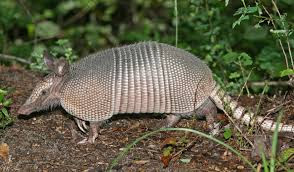
FACTS ABOUT THE ARMADILLO
G'day folks,
Welcome to the world of a creature that looks prehistoric. Translated from Spanish to mean ‘little armoured one’, armadillos are the only living mammal with such a shell!
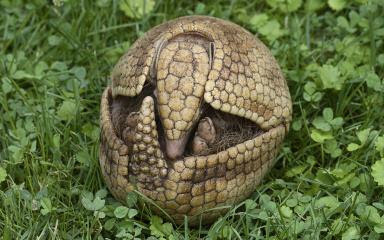
Quick Facts
Type: MammalDiet: OmnivoreLife span: 5-10 years in the wildSize: 13-150cm (5-59”)Weight: 0.85-54kgHabitat: Rainforests, grasslands, semi-desertsRange: Latin America and into parts of North AmericaScientific name: Dasypodidae
Amazing Facts About the Armadillo
There are 20 different species of armadillo, all of which live solely in Latin America with the exception of the Nine-banded armadillo which has expanded into the USA.The Nine-banded armadillo is the official state small mammal of Texas, nicknamed the ‘hillbilly speed bump’ as they are hit on the roads so often. During the 1920s depression, the Nine-banded armadillo was eaten, referred to as the ‘Hoover Hog’ as a result of President Hoovers failure to keep meat on the tables.Expanding northward, the Nine-banded armadillo is now a common sight in Missouri, USA.Armadillo is a Spanish word, translating to ‘little armoured one’, named by Spanish explorers to Latin America.Armadillos are covered in bony plates that create their ‘armour’. They are the only living mammal to wear such a shell. The plates cover their back, legs, head and tail, composed of small epidermal scales of horn-covered bone. The plates overlap each other for added protection.Many think of armadillos rolling themselves into a ball for protection but in fact there is only one species – the three-banded armadillo – which can encase itself in its shell, curling its head and feet inwards forming a hard ball. This tactic confused predators, even a dog cannot undo the armadillo’s ball.Due to their lack of fat stores and low metabolic rate, armadillos hate the cold. If there are times of unusually cold weather, a whole population can be wiped out!
Armadillos have a low body temperature, between 33-36˚C (91-97˚F), a human’s body temperature is 37˚C (98.6˚F).Generally solitary creatures except during mating, they will sometimes group together in a burrow in cold conditions to keep warm.
Armadillos are closely related to sloths and anteaters, sharing some similarities. For example, an armadillos tongue is long and sticky, like anteaters, designed to extract ants and termites from their tunnels.An armadillos diet is comprised of beetles, insects, ants, termites, plants and some fruit. If given the chance, they will eat small ground-nesting birds and their eggs.With very poor eyesight and hearing, armadillos rely on their strong sense of smell to hunt. They can smell things which are up to 20cm below the ground! They also have long straggly fur on their underside to allow them to feel what they are walking over, used similarly to a cat’s whiskers.
Armadillos have between 1-15 babies. The Nine-banded armadillo always gives birth to 4 identical quadruplets. They are produced from a single egg which splits in four, meaning the babies will all be the same gender.
Armadillos are able to delay implantation of the fertilised egg at times of stress; it is thought this can be delayed for as long as 2 years!
Baby armadillos have soft leathery skin which hardens after a few weeks.
Where armadillos live is dependent on soil type, they prefer sandy or loam soils which are loose and porous, making it easier to dig for food and make burrows.
Armadillos have very strong legs with huge front claws which aid digging.
Armadillos can swim well but, due to their heavy shell, they have to swallow air to inflate their stomach to give them buoyancy. They can also hold their breath for up to 6 minutes so will sometimes walk across the bottom of a river or lake.
When armadillos feel threatened they tend to run away into their burrows or into thorny vegetation where their armour protects them and predators cannot follow. Some species will jump 3-4ft in the air when they are surprised.
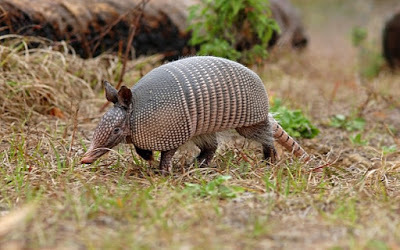
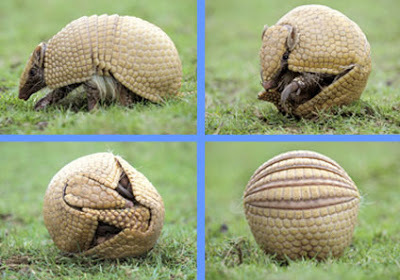

Clancy's comment: These and other creatures like alligators, hippos and rhinos, always appear to be millions of years old.
I'm ...


Published on November 07, 2017 10:31
November 6, 2017
7 November 2017 - MYSTERIOUS UNDERGROUND TUNNELS IN LIVERPOOL
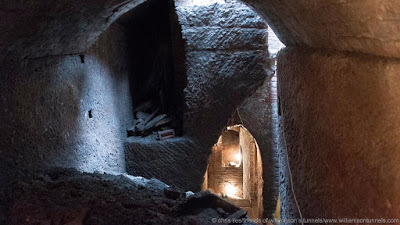
MYSTERIOUS UNDERGROUND TUNNELS IN LIVERPOOL
G'day folks,
Here is another discovery shrouded in mystery.
F or fifteen years, retired Liverpudlian locals and curious have-a-go volunteers have been digging up a vast network of 200 hundred-year old tunnels and cellar systems beneath their streets, not knowing how far they go, where they lead to and why they are even there.
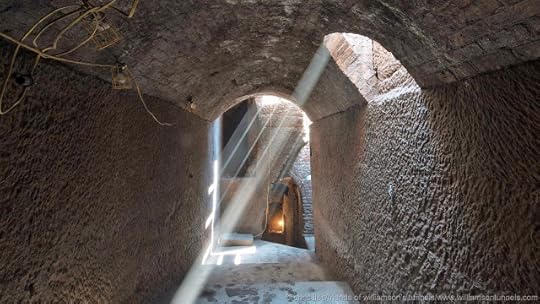
The only clue history has given, is that they were built by a successful and philanthropic tobacco merchant by the name of Joseph Williamson, born in 1769. An entrance to the system was even found in the basement of his former house, but there are no known records or paper from his lifetime that give any explanation as to what this secretive underground network was for.

This is particularly strange given the complexity of the design and vastness of the tunnels, which include multiple levels with stone steps leading to caverns as deep as 20 feet. Years before the great railway tunnels and bridges of 19th century England were built, the system features an advanced design ahead of its time, with solid arches that have stood the test of time 200 years on. Such level of construction would have required extensive and skilled manpower on Williamson’s part; hiring a substantial number of workers to build them; and yet, mysteriously, there are no records.

The fact that Williamson produced so little documentation about the purpose of his self-financed tunnels reveals that he was very secretive about it. It has even created speculation that Williamson was part of an extremist religious sect, building tunnels where his fellow believers could escape Armageddon and emerge later to build a new city.
Less extreme theories suggest he was just a retired local philanthropist responding to the poverty surrounding his neighbourhood by hiring unemployed men to mine some old quarries.

After his death, at some point Williamson’s tunnels were filled in after locals complained of the smell coming from the abandoned caverns which had become nothing more than an dumping ground for Liverpool’s trash.

Over time, they were forgotten, buried in the past, an urban legend that some Liverpudlians knew about, but no one really cared to explore.

All that changed in 2001 when curiosity got the best of a band of investigators. The group “broke into” a suspected site in Williamson’s former neighbourhood and discovered their first cellar in one of the upper levels of the tunnel system.
Ever since, in their free time, the group that calls themselves “ Friends of the Williamson’s Tunnels ” have been filling more than 120 skips a week with dirt and waste material, as they burrow further and deeper into Liverpool’s subterranean secret.

Along the way, they’ve collected enough historic artefacts to fill a small museum, including 19th century smoking pipes, schoolchildren’s ink pots, animal bones and bottles that held “everything from beer to poison”.

Clancy's comment: Extraordinary. What will they find next?
I'm ...


Published on November 06, 2017 12:37
November 5, 2017
6 November 2017 - MOVING PICTURES
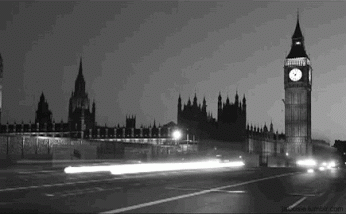
MOVING PICTURES
G'day folks,
Welcome to another selection of moving pictures.



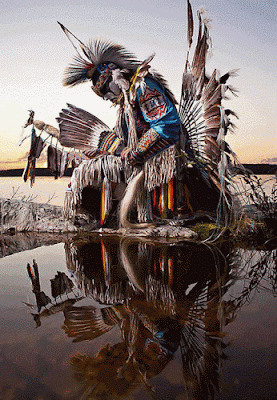



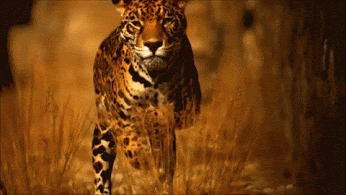





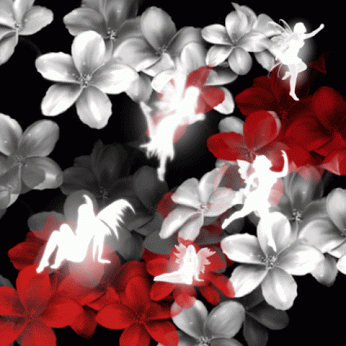


Clancy's comment: I love the dog on the motorbike.
I'm ...


Published on November 05, 2017 12:11
November 4, 2017
5 November 2017 - SECRET WW 11 OFFICERS’ CLUB
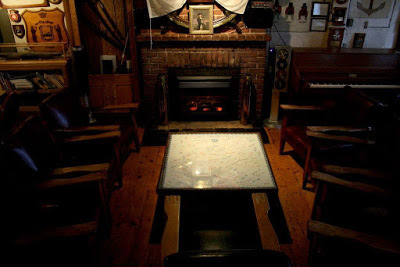
SECRET WW 11 OFFICERS’ CLUB
G'day folks,
Welcome to another secret hideout.
I n downtown St. John’s, Newfoundland, there is an old warehouse overlooking the harbour that looks as anonymous as all the other brick buildings surrounding it. At least until you look at the roof.
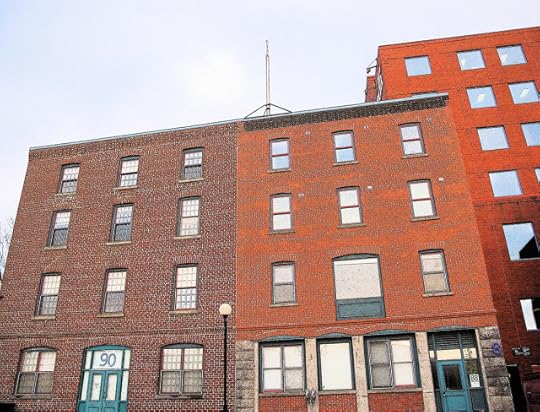
For protruding out of the flat roof, is what appears to be a rather unusual looking aerial. It is thicker than you might expect, and the eagle eyed will notice it curves at the end. It is, quite improbably, a periscope from a Nazi U-Boat captured during World War II.

Even more incredibly, the periscope leads down into the attic, and into a secret bar which has remained frozen in time, much as it was during World War II when the periscope was added.
This perfectly preserved, secret club, known appropriately at The Crow’s Nest, was a hideaway and refuge for Naval officers fighting in the Battle of the Atlantic.

St. John’s is a beguiling, small city, in one of Canada’s wildest and most remote Provinces.
“A queer place, full of heights and hollows, corners and angles”, wrote one traveller in 1872. “A nebulous collection of wooden huts perched higgledy-piggledy upon the stony braes….the larger shops are very respectable and do a great deal of quiet business, for St. John’s being the emporium for the whole island.”

With its naturally formed deep harbour, protected by cliffs on both sides, St. John’s had been a perfect port ever since it was settled as Britain’s first colony in the 1600s. It would prove to be the ideal base for the Battle of the Atlantic during World War II.
The Battle of the Atlantic was the longest campaign of the Second World War, running almost throughout its entire six years. It was fiercely contested between the German Navy and U-Boats hell bent on destroying the convoys bringing vital supplies to Great Britain from North America. “The struggle for victory over Hitler hinged on getting men, weapons, fuel and food”, wrote Jonathan Dimbleby. “For Dönitz, whose U-boats were attempting to sever the British lifeline across the Atlantic, it was a truth that gnawed at his very being.”

The convoys were protected by the Royal Canadian Navy as far as Iceland, where they were to be escorted to Great Britain by the Royal Navy. The U-Boats hunted in what became chillingly known as wolf-packs, and the desperate fighting was carried out amidst the freezing, perilous seas of the North Atlantic.
Most of the convoys left from Newfoundland, the closest port to Iceland, and St. John’s teemed with naval life. There were many officers’ messes throughout the city, but they were spread out, and during the nightly black outs, it was somewhat tricky to find your way back to ship. Captain Rollo Mainguy decided that what was needed was a central clubhouse for the officers that was handy to the docks.

The attic of the old Butler warehouse overlooking the entrance to the harbour was chosen in 1942, rented out for the sum of one pound a year, and the officers of the Royal Canadian Navy had their hideout.
It was for official purposes, named the ‘Sea-Going Officer’s Club’, but it became known amongst the young officers as ‘The Crow’s Nest’.
Hidden away, it soon became a cosy, secret refuge from the horrors of fighting in the frigid North Atlantic. “Here the officers of His Majesty’s Navies and the Navies of our Allies engaged in the Battle of the Atlantic, sought and found a secure haven from the perils of the sea. From hence they went forth again to resume the fight”, reads a brass plaque in the clubhouse.
The secretive Crow’s Nest was, as it is today, suitably tricky to get into; entrance was gained via one of St John’s improbably steep side streets, that led to a discreet, narrow staircase of fifty-nine steps. At the top of the precarious staircase is a plain door with a brass plaque: ‘Crow’s Nest Officer’s Club – Members Only.’

It is told that the name was created by one Lt. Col. Peter Stevens, who after huffing and puffing his way to the top of the rickety steps ‘mopped his forehead and gasped, “crikey, this is a snug little Crow’s Nest.”
Today, the Crow’s Nest looks much as it did during the height of one of the most brutal, and vital battles of the war. It is snug and low-ceilinged, with a fireplace. The walls are decorated with colorful, hand painted, gun-room art from the ships that took part, along with mementoes from vessels lost at sea, and captured Germans. And just to the left of the bar, the periscope of U-190 that leads up to the roof. The Crow’s Nest is so perfectly preserved in time, that it appears as if the officers had just left for the sea.
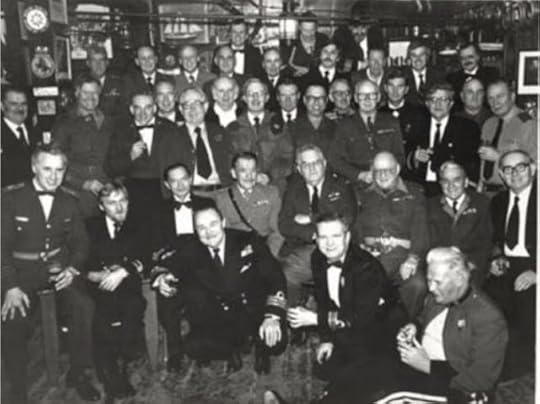
The Crow’s Nest swiftly became a focal point for off duty officers. “Its fame has spread wherever Canadian destroyers, frigates or corvettes have tossed depth-charge patterns, or churned white water down an Atlantic hill to ram a surfaced sub”, wrote naval historian Stephen Leacock. “There are no membership dues and no charge slips; the member might not pass this way again. But the Crow’s Nest is as exclusive as any hideaway of the elderly and rich from the Halifax Club to the lush quarters of the retired colonel in faraway Victoria, B.C. The basic credentials for membership is participation in the Battle of the Atlantic. No other need apply.”
Getting into, and especially out of the Crow’s Nest was tricky, particularly after a few rounds of drinks. “Considering that there are fifty-nine tortuous steps in this ascent, visitors are often impressed by the fact that nobody has fallen down and broken his neck. To date, the only casualty has been a Norwegian lieutenant-commander who crept down fifty-seven steps successfully, fighting a ground swell every inch of the way, and in a sudden burst of confidence tripped over the last two and got a deep gash in his forehead.” – Lieut. Stuart Keate.

At first, officers leaving for the Atlantic would carve their names and ship into the wall. Captain Mainguy was less than pleased. Upon further reflection he considered that if they’re going to do it anyway, he might as well put an official clubhouse stamp on it: each ship was allocated four square feet of wall space, to do with as they pleased. Each ship began to fill their space with plaques, insignia and colourful works of art……angels hurling thunderbolts into the ocean at lurking U-boats, Popeye seizing German bombers out of the sky, favourite pin up girls astride Canadian corvettes.
As much as the officers were proudly championing their ships, they were also leaving behind a memory of themselves, before heading out again into the cruel sea, perhaps never to return.
On one central pillar in the club, there is a spike driven into the wood. The six inch spike came from the corvette, HMCS Spikenard. On the Crow’s Nest’s opening night, January 27th, 1942, in a competition between ships as to who could hammer a spike into the bar room floor with the least number of hits, Lt. Cdr H.F. Shadforth of the Spikenard did his ship proud.
But just two weeks later, whilst escorting a convoy to Iceland, the Spikenard was torpedoed by U-136, sinking with just eight survivors. The spike in the floor of the Crow’s Nest was sawed out and mounted on the pillar in memory of the doomed ship and her crew.

One wall shows a shell casing painted in red and white stripes to resemble a barber’s pole. During the Atlantic convoys, strict radio silence was imperative to try and avoid detection from listening U-boats. To make the ships of the Canadian escorts distinctive from the massed merchant navy vessels, they painted red and white stripes on their funnels, looking a lot like barber poles.
The end of the war saw the Crow’s Nest close its doors on June 13th, 1945.
But the mass repatriation of officers returning from far flung theatres of war, saw St. John’s maintain a large military presence, and in 1946, the Crow’s Nest reopened, as it has done ever since.

Clancy's comment: You just never know what lies behind some doors, eh?
I'm ...
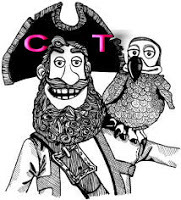

Published on November 04, 2017 13:42
November 3, 2017
4 November 2017 - AMAZING CHAINSAW ARTIST
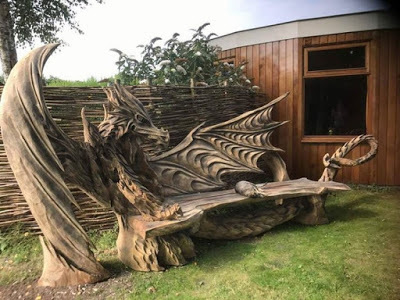
AMAZING CHAINSAW ARTIST
G'day folks,
Now, here's a man with great talent. Estonian chainsaw artist Igor Loskutow recently shocked the internet with one of his newest masterpieces, a magnificent dragon bench carved out of a giant log.
It’s not clear whether Loskutow is a big Game of Thrones fan or if he just likes dragons, but there’s no question that he has incredible talent. Born in Talin, Estonia, the artist has been creating chainsaw wood carvings for the last 15 years, and it shows. He is currently a part of the Husqvarna chainsaw carving team, with which he travels across Europe, showing off his incredible skill.
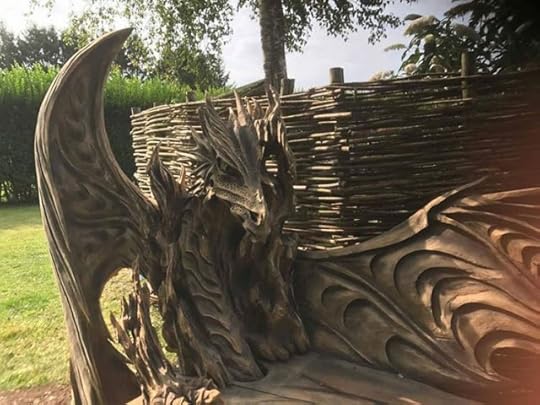
Although he uses a variety of tools for the really intricate details, the bulk of his work is done with an arsenal of chainsaws, which makes his intricate masterpieces even more impressive.
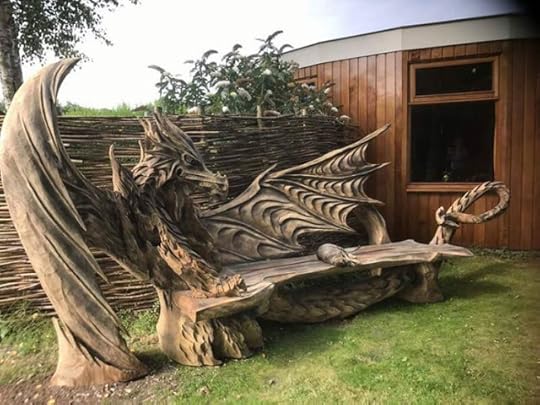
In case you’re interested in having this incredible dragon bench decorating your garden, you should know that it already has a home, next to a butcher shop. The good news is that Loskutow can probably carve you one just as nice, maybe even more so. He has already created a similar one at the start of the year, and looking at his Facebook page, it seems that there's nothing he can’t do with a chainsaw.






Clancy's comment: Some people have swags of talent, eh?
I'm ...

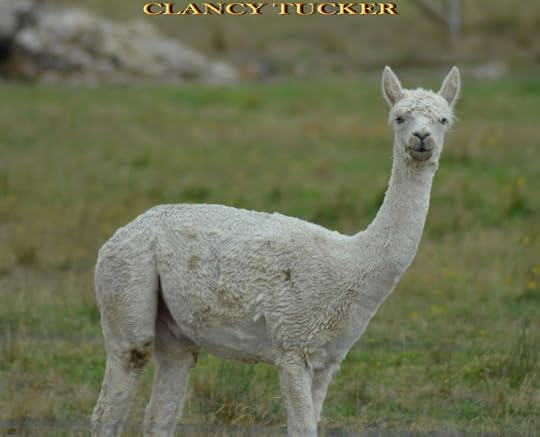
Published on November 03, 2017 13:06
November 2, 2017
3 November 2017 - THE KLU KLUX KLAN
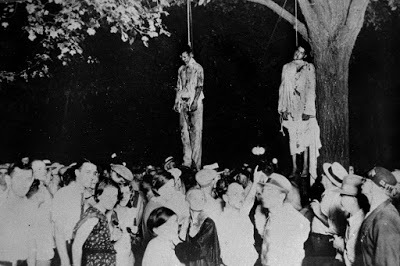
THE KLU KLUX KLAN
G'day folks,
Founded in 1866, the Ku Klux Klan (KKK) extended into almost every southern state by 1870 and became a vehicle for white southern resistance to the Republican Party’s Reconstruction-era policies aimed at establishing political and economic equality for blacks.
Its members waged an underground campaign of intimidation and violence directed at white and black Republican leaders. Though Congress passed legislation designed to curb Klan terrorism, the organization saw its primary goal–the reestablishment of white supremacy–fulfilled through Democratic victories in state legislatures across the South in the 1870s. After a period of decline, white Protestant nativist groups revived the Klan in the early 20th century, burning crosses and staging rallies, parades and marches denouncing immigrants, Catholics, Jews, blacks and organized labor. The civil rights movement of the 1960s also saw a surge of Ku Klux Klan activity, including bombings of black schools and churches and violence against black and white activists in the South.

Founding of the Ku Klux Klan
A group including many former Confederate veterans founded the first branch of the Ku Klux Klan as a social club in Pulaski, Tennessee, in 1866. The first two words of the organization’s name supposedly derived from the Greek word “kyklos,” meaning circle. In the summer of 1867, local branches of the Klan met in a general organizing convention and established what they called an “Invisible Empire of the South.” Leading Confederate general Nathan Bedford Forrest was chosen as the first leader, or “grand wizard,” of the Klan; he presided over a hierarchy of grand dragons, grand titans and grand cyclopses.
The organization of the Ku Klux Klan coincided with the beginning of the second phase of post-Civil War Reconstruction, put into place by the more radical members of the Republican Party in Congress. After rejecting President Andrew Johnson’s relatively lenient Reconstruction policies, in place from 1865 to 1866, Congress passed the Reconstruction Act over the presidential veto. Under its provisions, the South was divided into five military districts, and each state was required to approve the 14th Amendment, which granted “equal protection” of the Constitution to former slaves and enacted universal male suffrage.

Ku Klux Klan Violence in the South
From 1867 onward, African-American participation in public life in the South became one of the most radical aspects of Reconstruction, as blacks won election to southern state governments and even to the U.S. Congress. For its part, the Ku Klux Klan dedicated itself to an underground campaign of violence against Republican leaders and voters (both black and white) in an effort to reverse the policies of Radical Reconstruction and restore white supremacy in the South.
They were joined in this struggle by similar organizations such as the Knights of the White Camelia (launched in Louisianain 1867) and the White Brotherhood. At least 10 percent of the black legislators elected during the 1867-1868 constitutional conventions became victims of violence during Reconstruction, including seven who were killed.White Republicans (derided as “carpetbaggers” and “scalawags”) and black institutions such as schools and churches—symbols of black autonomy—were also targets for Klan attacks.
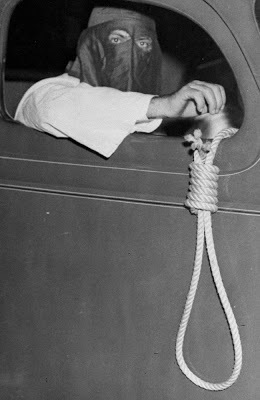
By 1870, the Ku Klux Klan had branches in nearly every southern state. Even at its height, the Klan did not boast a well-organized structure or clear leadership. Local Klan members–often wearing masks and dressed in the organization’s signature long white robes and hoods–usually carried out their attacks at night, acting on their own but in support of the common goals of defeating Radical Reconstruction and restoring white supremacy in the South. Klan activity flourished particularly in the regions of the South where blacks were a minority or a small majority of the population, and was relatively limited in others. Among the most notorious zones of Klan activity was South Carolina, where in January 1871 500 masked men attacked the Union county jail and lynched eight black prisoners.
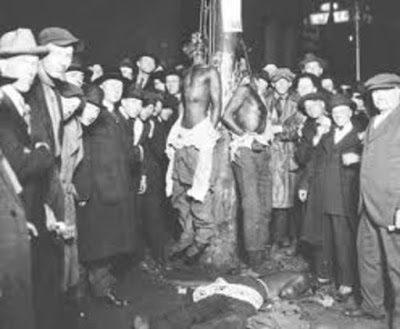
The Ku Klux Klan and the End of Reconstruction Though Democratic leaders would later attribute Ku Klux Klan violence to poorer southern whites, the organization’s membership crossed class lines, from small farmers and laborers to planters, lawyers, merchants, physicians and ministers. In the regions where most Klan activity took place, local law enforcement officials either belonged to the Klan or declined to take action against it, and even those who arrested accused Klansmen found it difficult to find witnesses willing to testify against them. Other leading white citizens in the South declined to speak out against the group’s actions, giving them tacit approval. After 1870, Republican state governments in the South turned to Congress for help, resulting in the passage of three Enforcement Acts, the strongest of which was the Ku Klux Klan Act of 1871.
For the first time, the Ku Klux Klan Act designated certain crimes committed by individuals as federal offenses, including conspiracies to deprive citizens of the right to hold office, serve on juries and enjoy the equal protection of the law. The act authorized the president to suspend the writ of habeas corpus and arrest accused individuals without charge, and to send federal forces to suppress Klan violence. This expansion of federal authority–which Ulysses S. Grant promptly used in 1871 to crush Klan activity in South Carolina and other areas of the South–outraged Democrats and even alarmed many Republicans. From the early 1870s onward, white supremacy gradually reasserted its hold on the South as support for Reconstruction waned; by the end of 1876, the entire South was under Democratic control once again.
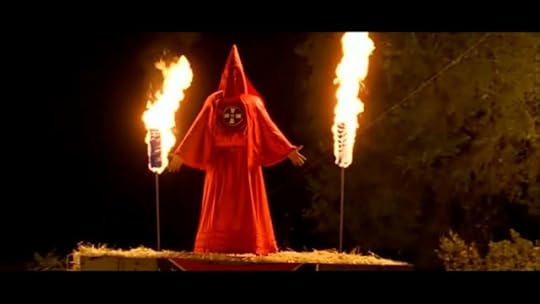
Revival of the Ku Klux Klan In 1915, white Protestant nativists organized a revival of the Ku Klux Klan near Atlanta, Georgia, inspired by their romantic view of the Old South as well as Thomas Dixon’s 1905 book “The Clansman” and D.W. Griffith’s 1915 film “Birth of a Nation.” This second generation of the Klan was not only anti-black but also took a stand against Roman Catholics, Jews, foreigners and organized labor. It was fueled by growing hostility to the surge in immigration that America experienced in the early 20th century along with fears of communist revolution akin to the Bolshevik triumph in Russia in 1917. The organization took as its symbol a burning cross and held rallies, parades and marches around the country. At its peak in the 1920s, Klan membership exceeded 4 million people nationwide.

The Great Depressionin the 1930s depleted the Klan’s membership ranks, and the organization temporarily disbanded in 1944. The civil rights movement of the 1960s saw a surge of local Klan activity across the South, including the bombings, beatings and shootings of black and white activists. These actions, carried out in secret but apparently the work of local Klansmen, outraged the nation and helped win support for the civil rights cause. In 1965, President Lyndon Johnson delivered a speech publicly condemning the Klan and announcing the arrest of four Klansmen in connection with the murder of a white female civil rights worker in Alabama. The cases of Klan-related violence became more isolated in the decades to come, though fragmented groups became aligned with neo-Nazi or other right-wing extremist organizations from the 1970s onward. In the early 1990s, the Klan was estimated to have between 6,000 and 10,000 active members, mostly in the Deep South.

Clancy's comment: Mm ...
I'm ...


Published on November 02, 2017 13:34
November 1, 2017
2 November 2017 - FACTS ABOUT THE BUMBLEBEE
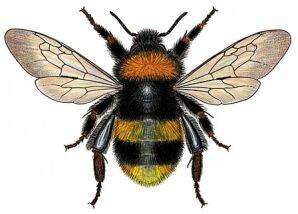
FACTS ABOUT THE BUMBLEBEE
G'day folks,
Welcome to some interesting facts about another tireless worker. A bumblebee is a member of the genus Bombus, part of Apidae, one of the bee families. This genus is the only extant group in the tribe Bombini, though a few extinct related genera are known from fossils. Over 250 species of bumblebee are known.
There are three castes of bumblebee: the large Queen; the smaller female worker bees; and the males (drones), which are very small relative to the others.
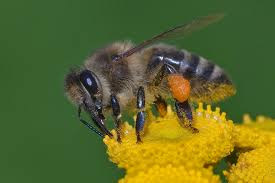
Quick FactsType: InsectDiet: HerbivoreLife span: Approximately 9-12 monthsSize: 2-2.5 cm in lengthWeight: Drone around 0.02 g, Workers between 0.04-0.60 g, Queen up to 0.85 gHabitat: Meadows, parks and gardensRange: Worldwide except arctic regionsScientific name: Bombus sp.
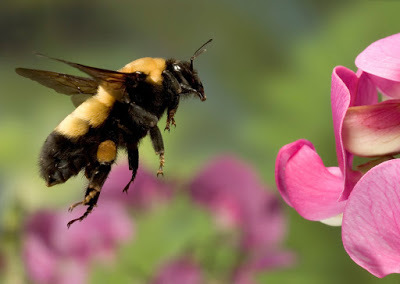 Amazing Facts About the BumblebeeThere are over 250 known species of bumblebee worldwide, and 24 in the UK.Only the worker bees and Queen have a sting.The bumblebee is peaceful and not aggressive, even compared to the honeybee. They only attack people when they are threatened. So if a bee is buzzing near you the best thing you can do is stay calm and let it fly away in its own time rather than flapping about, which is more likely to cause you and the bee harm!Bumblebees are social animals and colonies can contain up to 150 individual bees. This is however quite small compared to honeybees that can have nests with over 50,000 bees.A cuckoo bumblebee will lay its eggs in the nest of other bumblebees, and leave the workers of that nest to rear the young. This is a clever form of deception which enhances the bee’s evolutionary fitness.During warm summer periods, bumblebees hover at the top of the nest and vibrate their wings in order to circulate the air and maintain a nice cool nest, performing the work that a ceiling fan does for humans.Bumblebees also use their wings to raise their body temperature. Bumblebee species are on the decline in Europe, North America and Asia, predominantly due to the rise in industrial agriculture. This will also have a catastrophic impact on other wildlife which are dependent on these plant species. This illustrates the huge importance of bumblebees and why they are known as a ‘keystone species’.
Amazing Facts About the BumblebeeThere are over 250 known species of bumblebee worldwide, and 24 in the UK.Only the worker bees and Queen have a sting.The bumblebee is peaceful and not aggressive, even compared to the honeybee. They only attack people when they are threatened. So if a bee is buzzing near you the best thing you can do is stay calm and let it fly away in its own time rather than flapping about, which is more likely to cause you and the bee harm!Bumblebees are social animals and colonies can contain up to 150 individual bees. This is however quite small compared to honeybees that can have nests with over 50,000 bees.A cuckoo bumblebee will lay its eggs in the nest of other bumblebees, and leave the workers of that nest to rear the young. This is a clever form of deception which enhances the bee’s evolutionary fitness.During warm summer periods, bumblebees hover at the top of the nest and vibrate their wings in order to circulate the air and maintain a nice cool nest, performing the work that a ceiling fan does for humans.Bumblebees also use their wings to raise their body temperature. Bumblebee species are on the decline in Europe, North America and Asia, predominantly due to the rise in industrial agriculture. This will also have a catastrophic impact on other wildlife which are dependent on these plant species. This illustrates the huge importance of bumblebees and why they are known as a ‘keystone species’. Bumblebees use a combination of colour and spatial relationships to learn from which flowers to forage. They can also detect both the presence and the pattern of electric fields on flowers, which occur due to atmospheric electricity, and take a while to leak away into the ground. They use this information to find out if a flower has been recently visited by another bee.
While bumblebees are fascinating and wonderful animals which deserve to be protected for their inherent value, their ecological and economic value is also undeniable, with around one third of human food requiring bee pollination. Many arable and horticultural crops depend on bumblebees for pollination. In some regions where hedgerows (where queens forage and build nests) are scarce, crop yields are already falling.
Unlike many other species’ conservation efforts, bumblebee conservation is genuinely something that everyone can play a major role in. A great way for everyone to help bumblebees is to plant wildflowers in gardens or in plant-pots for window-ledges.
In Native American symbolism the bumblebee represents honesty, pure thinking, willingness and drive.
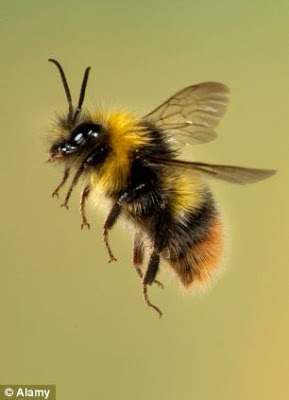
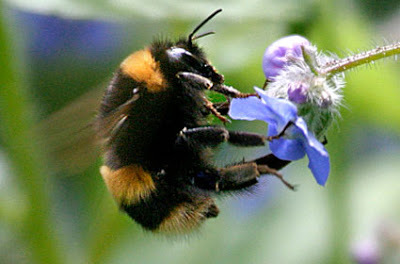

Clancy's comment: Amazing nature, eh?
I'm ...


Published on November 01, 2017 14:06
October 31, 2017
1 November 2017 - BOOKSHOPS AROUND THE WORLD
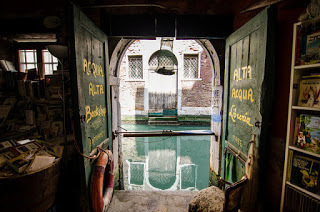
BOOKSHOPS AROUND THE WORLD
G'day folks,
Anyone who has read my award-winning book 'KY!' will relate to this post. The main character in that book, which is about bullying by the way, loved opp shops, where she could buy books cheaply. Rida Khalid, just devoured books. She would smell the old books and wonder what they had witnessed.
Anyway, check out these fine photographs of bookshops around the world.





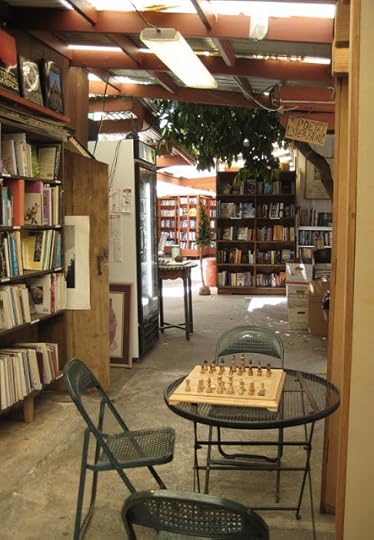





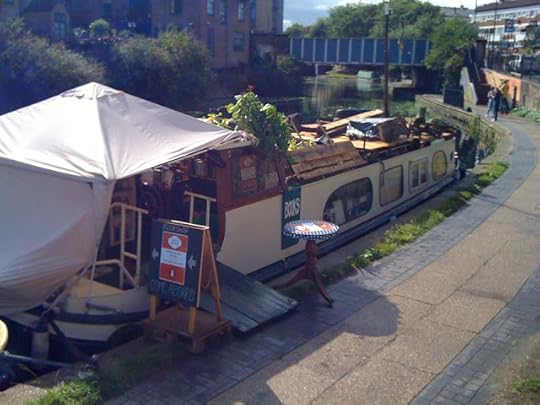






Clancy's comment: Such charm. I could smell the history from here. By the way, grab a copy of 'KY!' - in paperback or e-book. You might just love it.
I'm ...
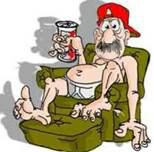
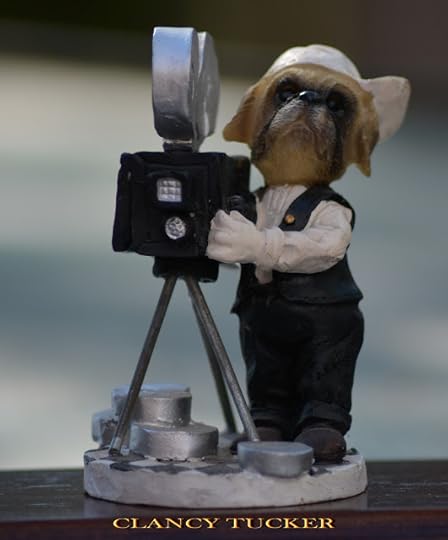
Published on October 31, 2017 12:45
October 30, 2017
31 October 2017 - TOP QUOTES
Published on October 30, 2017 13:46
October 29, 2017
30 October 2017 - DAVE’S MAGNIFICENT CARAVAN

DAVE’S MAGNIFICENT CARAVAN
G'day folks,
Welcome to the work of a clever man.
F or some of us, DIY means hanging up a few picture frames at the weekend, or giving the garden shed a new lick of paint. For Dave Moult of Malmesbury in Wiltshire, England, DIY means building a teardrop trailer from scratch that Jules Verne would have been jealous of.
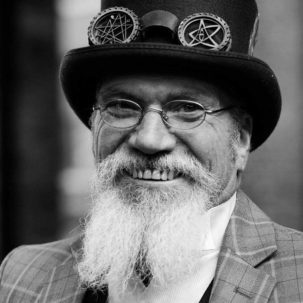
This is actually the sixth teardrop trailer David has built himself, sourcing old original parts from car-boot sales or eBay. While the materials don’t cost him much, Moult can spend hundreds of hours over many weekends working on a trailer. He gets quite attached to them and has only ever sold one for £5,000 after 2 years of use.

Let’s take a look-see at the evolution of his epic DIY project…
The leather panels came from an old sofa Dave bought for £15 and worked with a specialist company Retro Retrims to give the feel of an old explorer’s library. The chandelier? It’s fashioned from an old coffee pot and copper pipes.
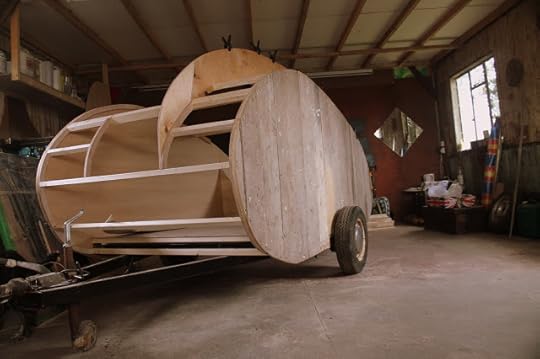
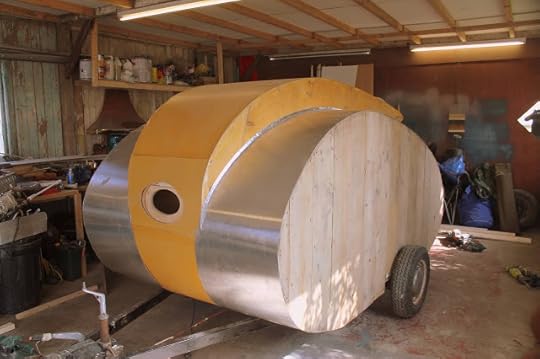





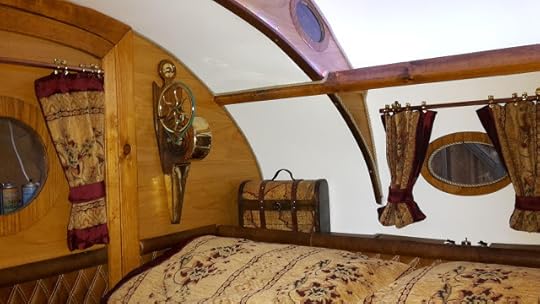

Clancy's comment: Wow, how cozy is that? Love ya work, Dave.
I'm ...


Published on October 29, 2017 14:41






















